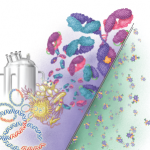CT-P13 is a biosimilar monoclonal antibody manufactured by Korea-based Celltrion. Called Remsima outside the U.S., it was approved by the European Medicines Agency (EMA) in 2013 and is also approved in Canada and Japan. Remicade, which was first approved by the FDA in 1998, is owned by Janssen Biotech Inc. and is used to treat rheumatoid arthritis, ankylosing spondylitis and psoriatic arthritis.
It won’t be the first biosimilar on the U.S. market—filgrastim-sndz (Zarxio), a cancer drug approved by the FDA in March 2015, has that distinction—but it’s an important milestone on the road to more affordable rheumatologic treatments, said David Daikh, MD, PhD, Kenneth H. Fye Chair in Rheumatology at the University of California, San Francisco.
“The potential for cost savings for patients and the availability of more cost-effective, effective treatment options are the obvious, hoped-for benefit of these drugs,” said Dr. Daikh. This year, companies that make biosimilars to etanercept (Enbrel) and adalimumab (Humira) are expected to seek FDA approval.
Because they are complex molecules that depend on living cells, biosimilars aren’t as simple to manufacture as small-molecule generic drugs. They require comprehensive testing of their immunogenicity to ensure safety. Even small changes can have major biologic effects that can potentially impact efficacy or put patients at serious risk, said Dr. Daikh.
“My major concerns are that as biosimilars are developed, there is adequate study to determine how closely they approximate their index agent, and that they are not automatically substituted as ‘generics’ because of cost or formulary preference,” he said. Rheumatologists need assurance that biosimilar use will be specifically tracked so that problems that might only turn up late and after more extensive experience can be identified, just as is done for conventionally approved unique drugs.
Seemingly minor changes in formulation can cause major adverse effects. When a stabilizing agent in Eprex, a biosimilar of epoetin alfa used for treating anemia that’s approved outside the U.S., was changed, it led to pure red cell aplasia (PRCA) in some patients.1
“It’s very important to understand that a biosimilar agent will never be identical, at a molecular level, to its reference drug,” said Douglas W. White, MD, a rheumatologist at Gundersen Health System in Onalaska, Wis. “Variations inherent in the manufacture of biosimilars can result in highly divergent responses in humans, especially with respect to immunogenicity, as we saw with Eprex. So we want safeguards in place to minimize such a possibility and to maximize our chances of catching it early should something go wrong.”



